I would like to know if it would be possible to replicate the effect like the bottom of the Top Tweets list with pure CSS?
4 Answers
Yes you can! Taking advantage of RGBa colors and CSS3 gradients, we can apply the following styles to an element and have a fading semi-transparent background:
Mozilla:
background: -moz-linear-gradient(top, rgba(255,255,255,0), rgba(255,255,255, 1));
Webkit:
background: -webkit-linear-gradient(top, rgba(255,255,255,0), rgba(255,255,255, 1));
(Updated after changes to Webkit gradients)
Sadly, this only works in Firefox 3.6+, Safari, and Chrome. If you need the effect in IE or older versions of Firefox, then you'd be better off using the semi-transparent PNG like Twitter does.
- 13
- 9
- 17,696
- 11
- 76
- 110
-
1You can get it working in older IEs as well via `filter` (IE7 and earlier) and `-ms-filter` (IE 8 & 9). See http://stackoverflow.com/questions/213750/gradient-colors-in-internet-explorer and http://stackoverflow.com/questions/5159136/can-you-use-rgba-colours-in-gradients-produced-with-internet-explorers-filter-pr – Paul D. Waite Mar 06 '11 at 16:55
-
3This only works if the background of this object is white, or static. Imagine that behind this element is a gradient or an image. – JLF May 06 '15 at 19:26
Although this is not an all-around sollution, it works on Safari/Webkit - so it's nice to know for someone who does mobile apps.
So, suppose you only address webkit, you've got this nice feature described here.
-webkit-mask-image: -webkit-gradient(...)
This also helps you when you can't fake the fade-out with some overlaid element. (for example, having an image on the background, instead of a solid color)
For the rest, go with the above.
- 844
- 1
- 7
- 17
In my case I thought that a linear gradient was ugly so I created an 'ease' gradient. Mix and match with the rest of the answers to get your desired result.
.your-class {
--scale: 1;
mask-image: linear-gradient(90deg,
rgba(255,255,255,0.0) calc(var(--scale) * 0%),
rgba(255,255,255,0.1) calc(var(--scale) * 6%),
rgba(255,255,255,0.5) calc(var(--scale) * 22.5%),
rgba(255,255,255,0.6) calc(var(--scale) * 25.5%),
rgba(255,255,255,0.7) calc(var(--scale) * 30%),
rgba(255,255,255,0.8) calc(var(--scale) * 36%),
rgba(255,255,255,0.9) calc(var(--scale) * 48%),
rgba(255,255,255,1.0) calc(var(--scale) * 60%),
);
}
- 2,527
- 1
- 17
- 18
If you want to use more up to date direction syntax for the gradient use to bottom, as in
background: -webkit-linear-gradient(to bottom, rgba(255,255,255,0), rgba(255,255,255, 1));
- 1,628
- 11
- 15
